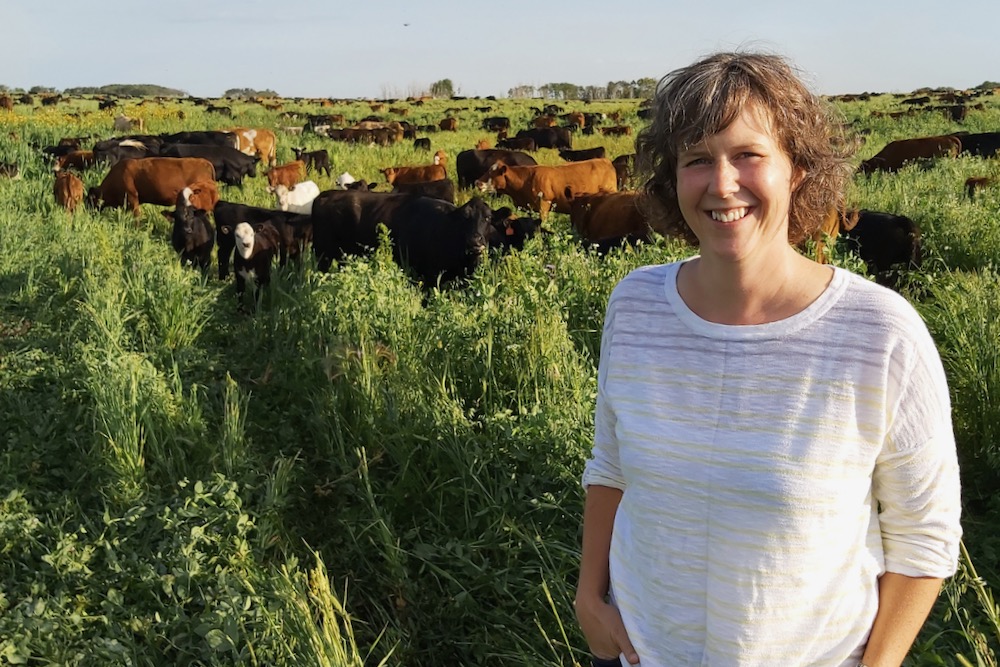Take time to learn the ins and outs of grazing brassicas
Toxicity can be an issue, and so can fussy eating -- but brassicas can benefit the soil and extend the grazing season
| 4 min read

Brassicas are a great ingredient in a polyculture but should be managed carefully, says Jillian Bainard, a forage researcher at AAFC's research centre at Swift Current, Sask. (Photo: Supplied)
With their ability to suppress weeds and break up compacted soil, brassica plants have become widely known as a good cover crop option.
Many producers graze their cover crops, but brassicas can also serve as a grazing crop.
“The brassicas are super watery and highly digestible,” Jillian Bainard, a forage research scientist at Agriculture and Agri-Food Canada’s Swift Current, Sask. station, said during a recent webinar.
“But they’re very low in fibre, which can also cause some digestive discomfort for animals so having that balance of some roughage with this high digestibility is a good thing.”
Although nutritious, brassicas are best managed as part of a polyculture to balance their inefficiencies, she said. Brassicas and legumes mixed with hairy vetch and radish, for example, represent a highly digestible, high-protein mix.
Producers have to be aware of toxicity levels, however. Mixtures high in brassicas may have toxic levels of nitrates and sulphates, particularly in late-season grazing. Ultimately, a feed test is in order.
“If you look at a suite of different brassicas that can be purchased, you can see many of them go above those safe levels for nitrates and sulphates.”
That doesn’t necessarily mean the mixture is poisonous, said Bainard, but it’s best to err on the side of caution.
“I talk to people that have grazed pure brassica crops and not had a problem,” she said. “Other people, especially with younger livestock, have definitely documented mortalities around this toxicity so it’s something to be aware of.”
Because brassicas are somewhat frost-tolerant and can regrow later in the year, they change the pasture mix.
“If they get grazed earlier in the season, other things may not come back as quickly,” said Bainard. “Here you go back and there’s this field full of brassicas and so that original proportion you seeded might not match up with what the cattle are actually grazing.
“So there could be some risks there in terms of toxicity if you weren’t paying attention to that scenario.”
There can also be too much of a good thing. The brassica-legume-hairy vetch-radish mixture mentioned above featured higher calcium, copper, iron, phosphorus, potassium and crude protein compared to an oats monoculture. Sounds great, right? That depends, she said.
“Depending on what type of animal you’re feeding and the stage they’re at, some of these things might not necessarily be a good thing to have in high amounts. They really have to be balanced in terms of rationing.”
Again, a feed test may be in order.
“If you’re going to be feeding these, we strongly recommend doing a feed test to understand what your blend looks like,” Bainard said. “Everybody’s blend is going to be a little bit different year-to-year depending on what you seeded so you’re only going to know what your own crop is looking like.”
Getting animals to graze brassicas is another matter.
“Palatability is really interesting and very much dependent on the system you’re working in, how your animals are grazing or feeding and what they’re used to,” said Bainard.
“At the research centre, we were using yearling steers and they showed really, really strong dislike for the brassicas. They just wouldn’t touch them. You could see there’s sort of these patches and then all of these bigger leaves just sort of sitting there. They were ignoring the brassicas and were losing weight.”
But just as in young children, tastes can change with enough exposure.
“We removed a lot of the animals from the trial but left three steers over six different paddocks,” she said. “We found that as they stayed on the trial, they got used to the feed and the plant’s palatability changed over time. As it got later in the season, they apparently got sweeter. We really saw the livestock start to gain weight.”
This palatability challenge is mainly an issue among smaller groups of animals, Bainard added.
“In higher-intensity grazing situations it’s probably not going to be as much of a concern because those cattle are going to put their head down and graze whatever’s in front of them.”
Animals in a large cow-calf herd still showed a preference for “a simple mix” (of oats and peas), grazing that first and then moving to a more complex mixture of different crops, including brassicas.
“But by the time they left, everything had been grazed very evenly,” she said.
The herd’s owner also recognized the opportunity that brassicas presented for a twice-over grazing scenario.
“He grazed probably a month sooner than what we would call peak biomass production, but was able to go back and re-graze that same field in October,” said Bainard. “The total biomass was quite similar to what he would have gotten, if not a little more, than if he had waited for that peak biomass.
“It was helpful for his grazing rotation because they came back to that area and had that forage again in that late season gap where many producers are looking to extend the grazing season.”
— Jeff Melchior reports for Alberta Farmer Express from Edmonton. A version of this article first appeared in the Dec. 26, 2022 edition of AFE (page 12).


